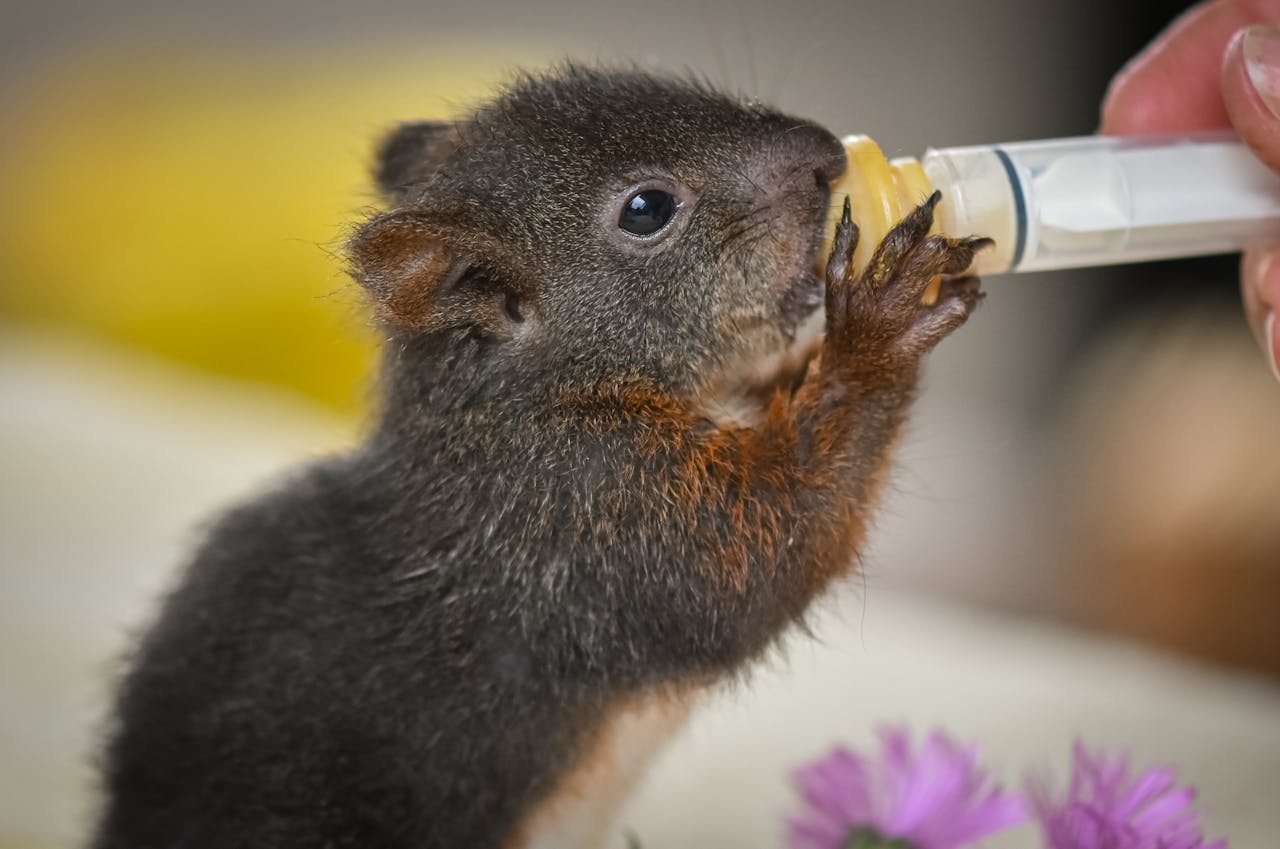Wildlife Care
What To Do If You Find Distressed Wildlife
What to Do If You Find Distressed or Injured Wildlife
Finding a wild animal in distress can be upsetting, and the desire to help is natural. However, approaching the situation with caution and knowledge is crucial for both your safety and the animal’s chance of survival.
Here are the essential steps to follow.
1. SAFETY FIRST: Protect Yourself and the Animal
Your safety is the absolute top priority. An injured or frightened animal, no matter how small, can be dangerous. It may bite, scratch, or carry diseases.
Never approach a large or potentially dangerous animal, such as a deer, coyote, fox, or raccoon. Keep a safe distance and call for professional help immediately.
Keep children and pets far away from the scene.
Do not assume an animal that is not moving is safe to handle. It may be in shock or preparing to defend itself.
2. Assess the Situation from a Distance
Before you intervene, take a moment to observe. Not every young animal found alone is orphaned or injured.
Baby Birds: It is normal for young birds called “fledglings” to be on the ground. They have feathers, can hop around, and are learning to fly. Their parents are usually nearby watching over them.
Is it a Fledgling? (Feathered, hopping): Leave it alone unless it is in immediate danger (e.g., on a busy road, being stalked by a cat). If you must move it, place it in a nearby bush or low tree branch.
Is it a Nestling? (No feathers or only downy fluff): If you can see the nest and it is safe to do so, gently place the bird back in its nest. The parents will not reject it because of your scent.
Fawns (Baby Deer) and Baby Rabbits: Mothers often leave their young alone for long periods to forage for food. This is a survival strategy to avoid leading predators to their babies.
A fawn curled up and quiet is usually just waiting for its mother. If you care, leave it there.
When to intervene: Only call for help if the baby has been crying for many hours, is covered in flies, is wandering aimlessly, or is obviously injured.
3. Contact a Professional for Advice
This is the most critical step. Always call a licensed wildlife rehabilitator, your state wildlife agency, or a local animal control officer BEFORE you intervene.
These experts can provide specific advice for your situation and determine if the animal truly needs help.
Who to Call:
Licensed Wildlife Rehabilitator: This is your best resource. They are trained and permitted to care for wildlife.
How to find one: Use the Animal Help Now website (ahnow.org) or app, which can connect you with local helpers based on your location. You can also search online for “[Your State] wildlife rehabilitator list.”
State Wildlife Agency: Search for your state’s Department of Fish and Wildlife or Department of Environmental Conservation. They will have a regional office you can contact.
Animal Control: For domestic-looking animals or wildlife in a highly urban area creating a public safety issue.
Police or Sheriff’s Department: For emergencies, such as a large animal on a major roadway posing a traffic hazard.
4. If You Are Instructed to Help
If a professional advises you to contain the animal, follow these steps carefully:
Prepare a Container: Find a well-ventilated cardboard box or a pet carrier. Line it with a soft, clean cloth (like an old t-shirt, no terrycloth towels as their claws can get stuck).
Protect Yourself: Wear thick gloves if possible.
Cover the Animal: Gently cover the animal with a light towel or blanket. This will help reduce its stress and make it easier to handle.
Contain the Animal: Gently scoop the animal into the prepared container.
Keep it Warm, Dark, and Quiet: Place the container in a secure, quiet, and warm location, away from children, pets, and noise. Do not disturb it. This minimizes stress, which can be fatal.
5. WHAT NOT TO DO – This is Extremely Important!
Acting with good intentions can sometimes do more harm than good.
DO NOT give the animal food or water. This is a leading cause of death in animals rescued by the public. They require specialized diets, and providing the wrong food or forcing water can cause choking, aspiration pneumonia, or serious digestive issues.
DO NOT attempt to treat injuries yourself. You can cause more pain and damage.
DO NOT keep the animal. It is illegal in most places to keep wild animals, and they require expert care to survive and be returned to the wild. They are not pets.
DO NOT handle the animal more than absolutely necessary. Stress can kill a wild animal.
DO NOT get too close to rabies-vector species (raccoons, bats, skunks, foxes) unless absolutely necessary and while taking extreme precautions. If you are bitten or scratched, seek medical attention immediately.

Compassionate Care
Our husband and wife team is dedicated to providing individualized care for each animal. We prioritize their well-being, ensuring a safe journey back to the wild.

Expertise You Can Trust
we are recognized by local authorities as trusted experts. Your wildlife concerns are in capable hands.
Support Our Mission
Your contributions help us care for injured wildlife and promote conservation education in our community. Every little bit counts!
